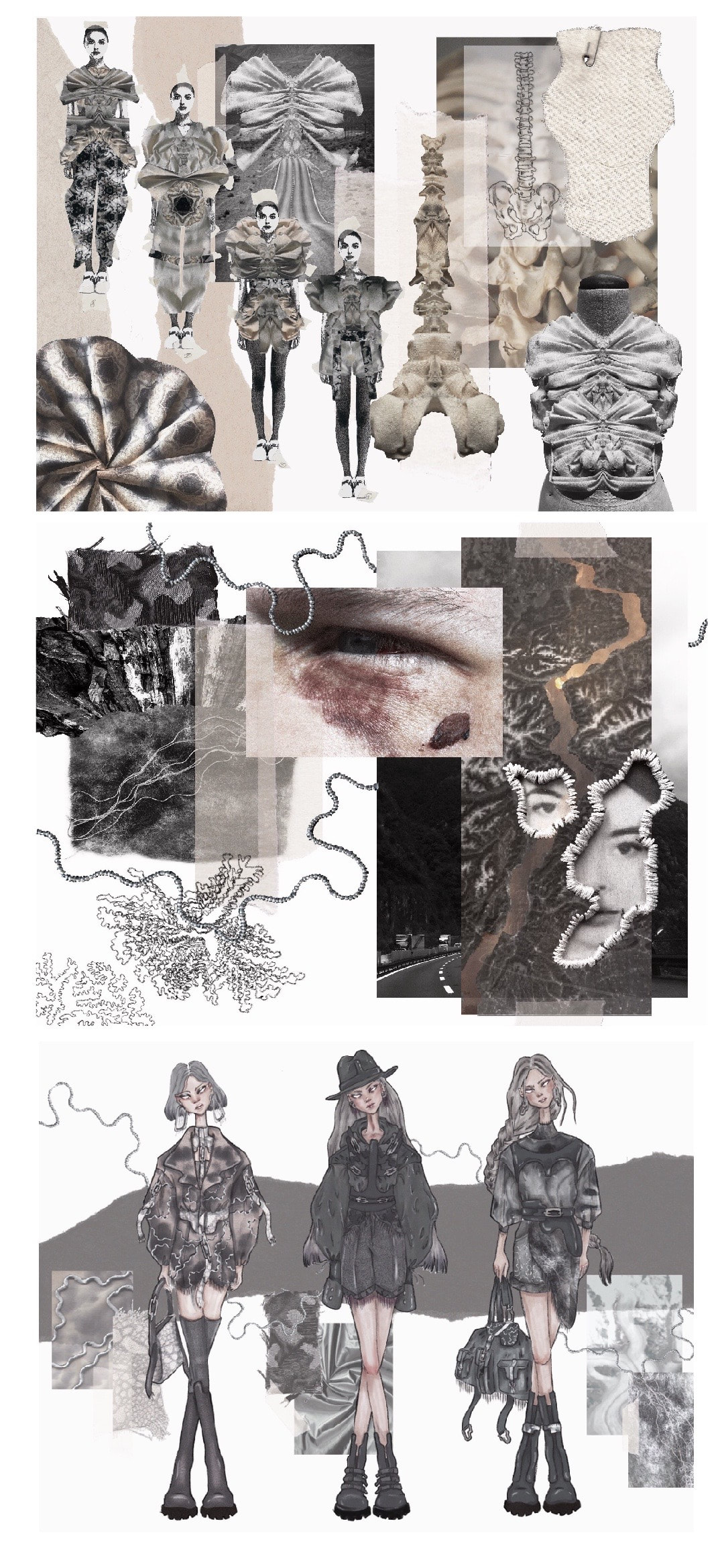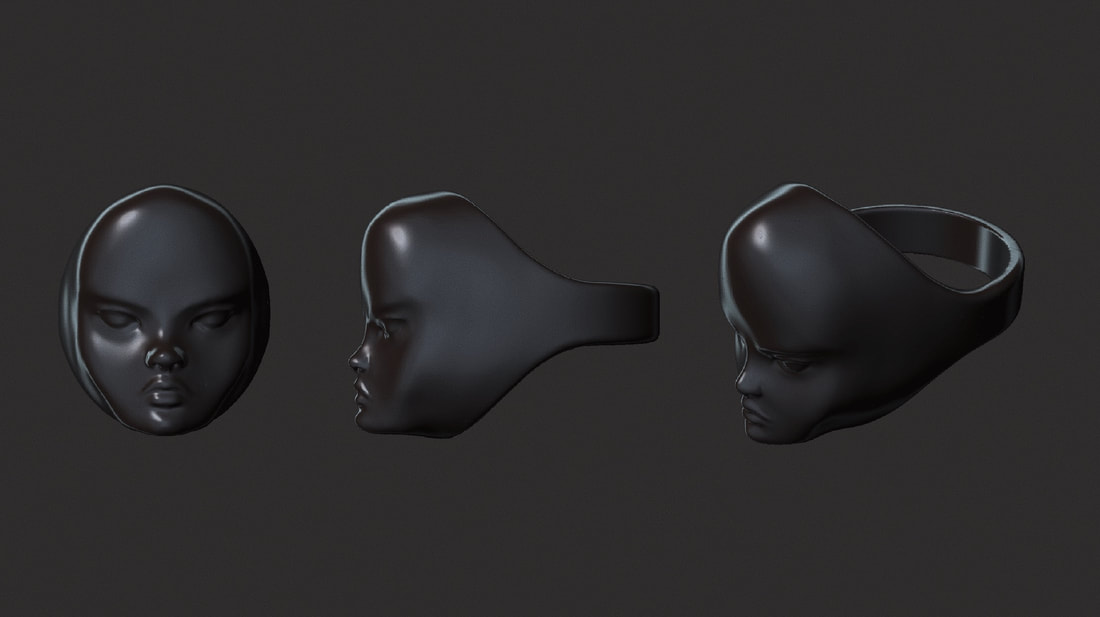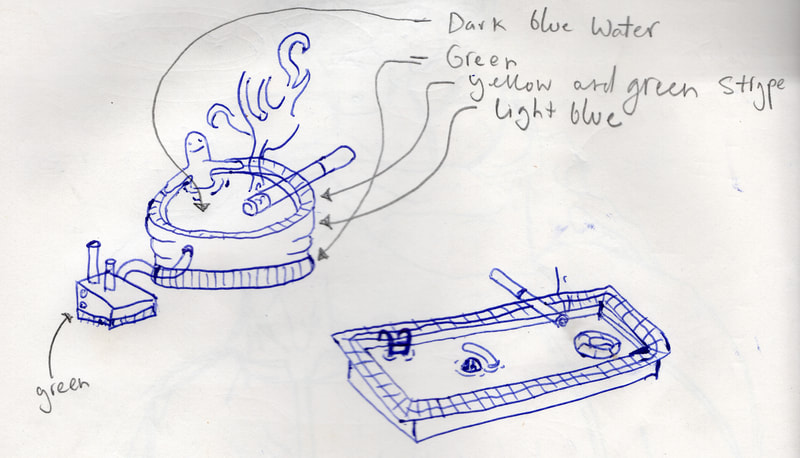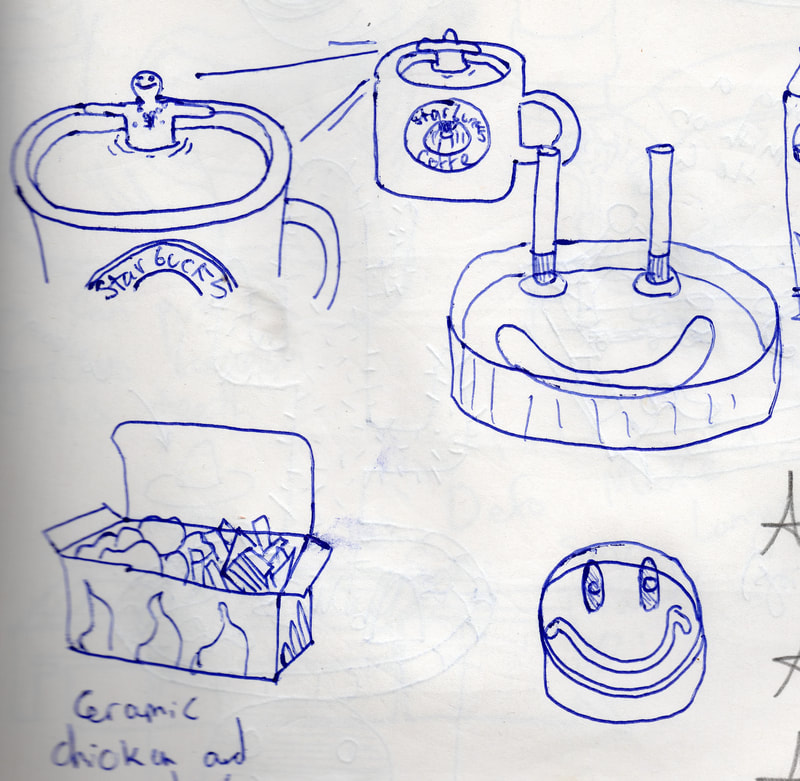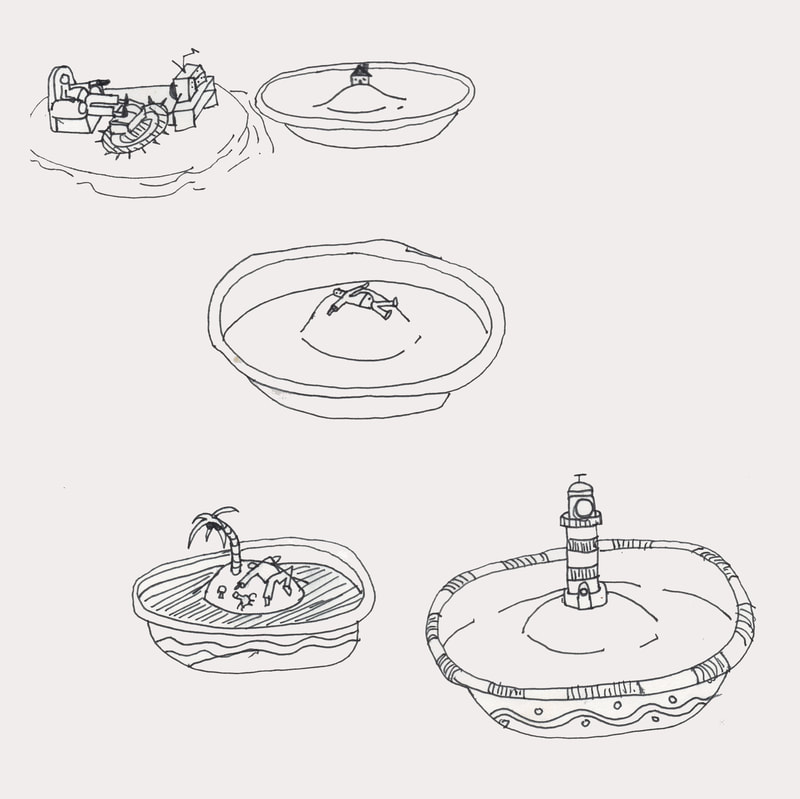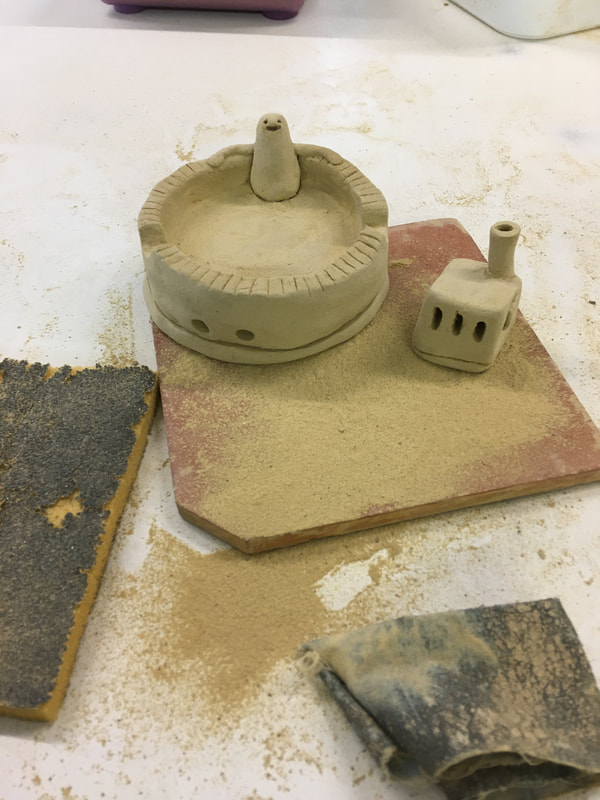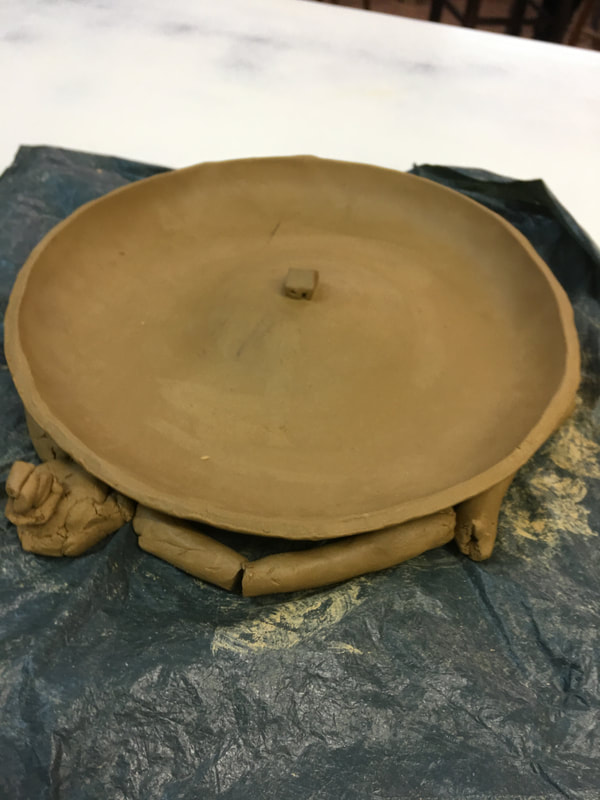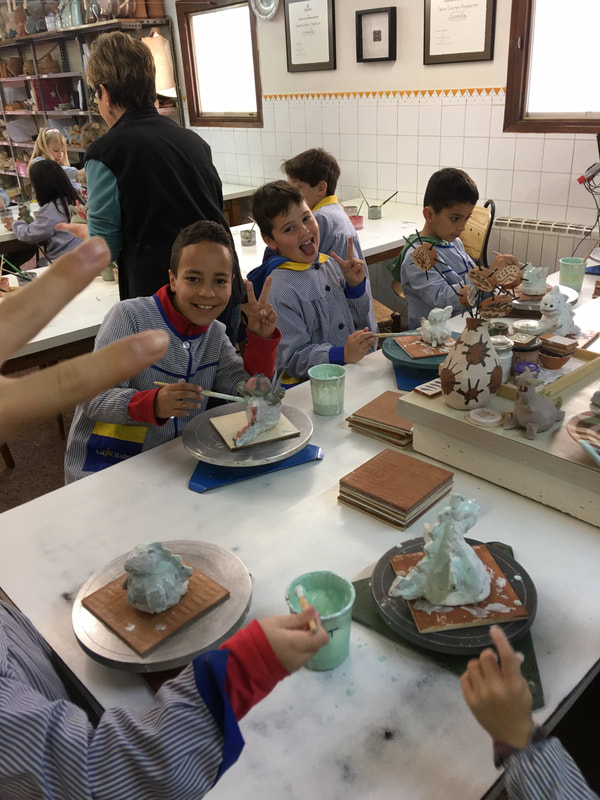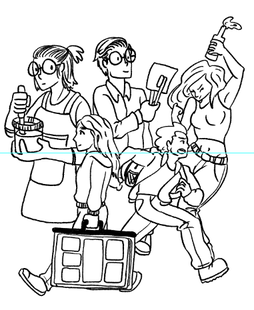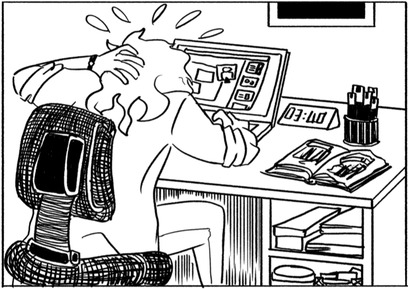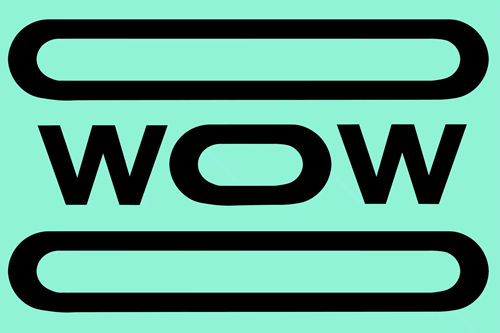Maria Kyriacou- GMDThe role of communicators in society
The art of covarying information has been at the centre of every interaction; from human face to face, to virtual and the premise has stayed a constant. In pressing times, especially as the one we are experiencing currently, the need to adapt our forms of communication is key. The shift from face to face sensory communication has now shifted to the virtual world where haptics disappears. However, even with the dismissal of these haptics we have not lost our sense of community and unity. As designers we are trained to communicate, whether this be a theme, a feeling or even a specific word the art of conveying a message is always in mind. Some will argue this is our biggest role, it gives us our purpose within society. This purpose whether to lead to invoking change or simply to put a smile on someone face, still has a premise in which it is built on. Thus, whether we are communicating face to face or through a screen our purpose does not change but simply our platform does. Creatives have found many interesting ways to build on this form of digital communication during this pressing time. From inspiration videos, illustration and animations to building safe spaces for those who struggle with isolation, allowing them to communicate in a non-judgmental digital environment. As people begin to crave the single form of sensory communication over time building these digital communities become even more essential. Does this burden fall on the individual or the group? Is it our job as individuals to make sure we keep these bonds through communication with those we choose to surround our self with or is it our job as a collective to check in on those around us and make sure that people are coping with this sudden adaptation of communication. Some would argue that we are predisposition to feel lonely. The causation of this loneliness could be due to the lack of commutation as our consciousness is becoming aware of its pre-existing presence. The lack of external stimulus leads the mind to focus on what it already has and less on what is going on around it, or in our case currently the lack of environment, leading to a shift in focus. Some can become fixated on this singular factor and other will be able to continue to ignore just like an average day. Thus, as loneliness is a longing for connection, how can we falsify and build virtual bonds that can last for distinct amounts of time as we do when face to face. Philosophers like Plato, Aristotle and Socrates have discussed communication in almost every topic for its importance when in relation to other topics and self-serving. Mans need to be happy is an impulse which is entirely dependent on communication. Communication and the emotions/experiences such as: love, sadness, consequence and reflection are what makes us human. As the abundance of online platforms makes communication almost effortless, we have seen universal example of community. For example, the clap for the NHS, was a good example of how people have interacted in solidarity online and as a community and one something that will bring joy to a stranger in a hard time. A silent form of communication which can still bring physical joy. So maybe instead to it being a question of whose role it is to build these communicative pathways, the solution could be simply communicate with the intention of spreading joy in a time where there is so much sadness.
1 Comment
Charlotte Greenwood, Illustration and Visual Media
Although I think of myself as an artist and photographer rather than an illustrator, I am aware of the impact my studies have had on my practice. Studying illustration has made me realise the significance of good communication and has altered my thought process and the way that I approach a project. As communication is the soul of my practice, it is important for me to consider what the role of communicators is in society. In the words of Theo Haimann, ❝Communication is the process of passing information and understanding from one person to another... It is the process of imparting ideas and making oneself understood by others.❞ To determine what the role of communicators is in society, we can examine the functions of communication. From my research, I discovered that these are:
We can also investigate the responsibilities of a communicator to determine this. In Communication for Business Professionals (2018), David Simon, Michelle Grimes, and Shauna Roch explain that these include:
The Role of Communicators in Society in Relation to My Practice: The message that I am trying to communicate through my art can be summarised as: human actions are destroying the environment and we need to change our ways. Therefore, I think that my role as a communicator in society is:
References:
Maja Hagen Illustration and Visual Media A lot has happened since my last post. I started my internship at the Sarabande Foundation beginning of January. Founded by Lee Alexander McQueen the foundation aims to support upcoming talents by giving them a studio space to work in, opportunities such as exhibiting their work and meeting important people in industry and giving them overall support in growing their creative practice. They also want to encourage interdisciplinary practice, supporting a range of various creatives such a jewellers, milliners, fashion designers, photographers, painters etc. This is particularly interesting to me because I have always had a fascination with the power of collaboration and the way other practices influence our own. The team is quite small but the office never feels empty because we have freelancers such as journalists renting spaces which again adds to the idea of having many different practices in one building. Me and two other interns who have their own specialist interests and skills divide the work load between us depending on where hands are needed and our own interests. The first two weeks consisted of a lot of physical work, photographing artworks, organising them and general organisation. My highlight was when I photographed a piece by Craig Green, who is also part of Sarabande and whom I have admired for a very long time. In addition Sarabande hosts a series of events such as workshops or talks. These would happen around twice a week and require us to work in different areas such as filming, photographing, tending the bar or checking in people at the entrance. After some time I started being give more tasks relating to layout designs of catalogues, press books, event invites. Layouts were something I never considered as one of my strengths which is why it was interesting to see that my work in this field was valued by the team. One of my gif e-invites was actually posted by Wallpaper Magazine which gave me new confidence in this field of designing. When I started the internship I thought that the learning outcome would be primarily based on understanding more adobe programs or my digital skills in general. In reality I have learned very different skills, arguably more important, such as a better time management as well as a new found appreciation of the time I can spend on creating art, something I have dearly missed during my full time employment. 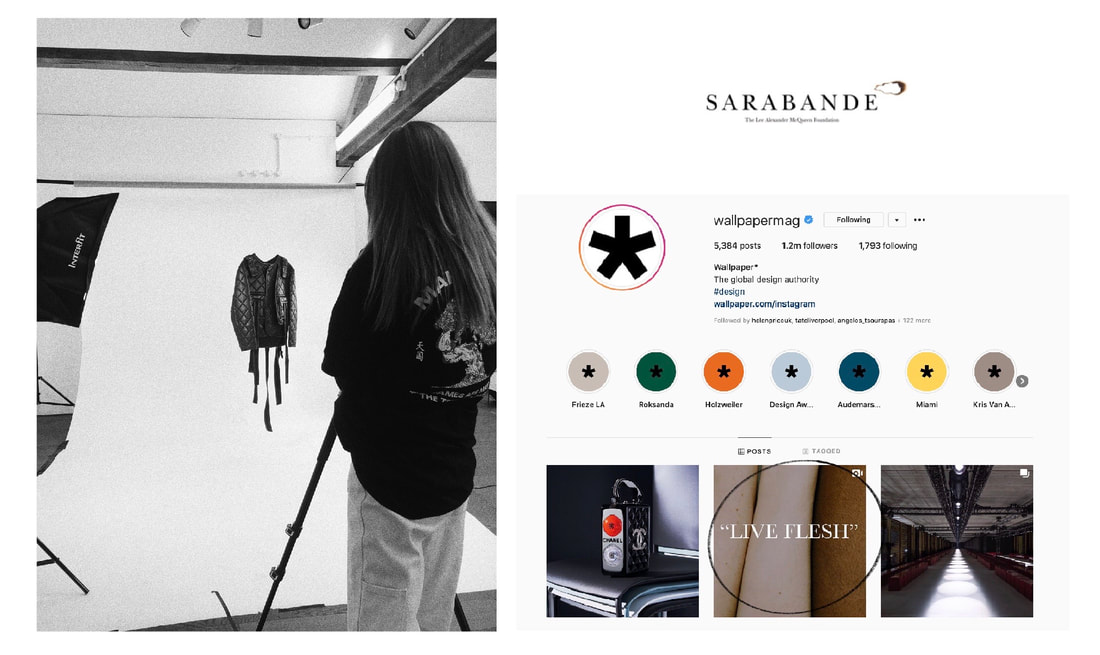 Another important journey of my DPS has been moving along too. As I mentioned in a previous post I was attending a short course at LCF at the end of last year, which aimed to introduce the students to the fashion designing process. With the knowledge I gather there I applied to the BA Fashion Design at CSM. After two sleepless nights I handed in my mini portfolio and was fortunately invited to attend an interview at the end of February. The whole experience, including the interview, has truly been a stress test for me, juggling full time work and creating a portfolio to the best of my ability has given me a chance to test my capability to work under pressure within a tight time frame. I haven’t heard back as of now, probably due to the corona virus outbreak, but I am trying to stay realistic and focus on all of the things I have learned through the application process. Obviously the recent COVID-19 outbreak has had impact on all of our further plans. I had plans to travel to Japan to learn about traditional making techniques as well as doing a sewing course to gather first experience in the making process of designing fashion. My self-initiated project also relied heavily on this plan as I was going to create a full outfit from the research I conducted for my Fashion Design application. It feels like this is a time to prove adaptability and resilience as well as the ability to thinking outside the box to adapt to the current situation. So instead I looked into another area that interests me which is 3D printing. Using an earlier project as a starting point I am currently creating a ring that will be 3D printed in wax and then cast in silver. I am also planning to develop this piece further by looking different engraving techniques. One of the jewellers at Sarabande, Castro Smith, has offered me valuable advice along the way. This project has allowed me to use my time at home in the most productive way possible, which is all we can do during a time like this.
Harry Colley
IVM Working as an English teaching assistant has been my main role throughout the DPS year. The role itself has taken up a large amount of my time, but this was expected when applying. I’ve been able to use the free time in-between work to complete self-initiated projects (SIP). Every day in school is different, I teach English, science and drama to students aged 5 to 11 years. I find each day extremely rewarding but obviously some more than others. e.g. taking students on visits to the local ceramic school is a lot of fun compared to invigilating an exam. Overall, it’s been a very exciting and beneficial experience, I’m now much more confident when speaking and presenting to large groups and my communication skills have improved both in English and now Spanish. Everything else that comes with this opportunity is what has really made it worthwhile. An obvious benefit is how quickly I’m getting to grips with the Spanish language. Luckily, this term, I’ve been living with a family who only speak Spanish. This has been amazing in allowing me to practice and develop a much stronger understanding of the language. I’m learning new things every day and I’m enjoying meeting new people and experiencing a different way of life. I know it’s crucial that I continue my illustration practice and don’t get too side-tracked with everything. And It’s important that I put time aside for more self-initiated projects and continue staying an active member of the creative community. More recently I’ve been attending a ceramics school and have been getting to grips with translating some of my illustrations into a new medium. With only two weeks under my belt its really opened my eyes to the endless ceramics I can make. As I’ve become more interested with traditional craft, such as textiles and ceramics, my eyes have been opened to a vast array of new crafters, designers, communities and consumers I had previously overlooked. At the moment its early days, but my plans are to make an array of projects experimenting with different methods of working in clay, from spinning to slab construction, of working in clay. Currently, I have two projects running alongside one another, and I aim to create homeware products such as ashtrays, vases and fruit bowls, all with their own illustrated twist in the coming weeks. *UPDATE* Unfortunately, due to the Coronavirus Pandemic Spain closed all its schools and shortly after this the country went into complete lockdown. I was then advised to return to England, which is extremely disappointing, especially as I was feeling really settled within the local community. I was not only housed with a great family I also had a great circle of friends. I had also been making good progress with my ceramics and unfortunately, I’ve had to leave all of this behind. I hope return whenever possible and finish them all at a later date. Although it’s disappointing to have to come back to England early, it has cleared up my calendar, as I’m not expected to take part in any online classes with students. Now that I have a lot more time on my hands, I’ve been able to jump into new projects which is exciting. I’ve already begun completing some larger embroidery pieces and I’m going to invest into an industrial rug tufting gun. I’m feeling excited for the weeks to come and look forward to seeing what’s in store. Charlotte Greenwood, Illustration and Visual Media
As the DPS brief submission deadline is getting closer and closer, I decided to start looking at some of the books on the suggested reading list as it is stated in the brief that:
Below, are some quotes that I found interesting or insightful from the books on the suggested reading list that I have read so far. “Make It Now!: Creative Inspiration and the Art of Getting Things Done” by Anthony Burrill. P. 44
P. 72 (My answers to Burrill's questions are italicised.) Five questions to ask yourself when you’re starting out:
P. 157 “It takes a long time to find your own voice as a person and as a designer. It’s tempting to take a shortcut to get there, but don’t – you’ll only make your best work and be truly happy when you are being you.” I found this piece of advice useful because I have always put a lot of pressure on myself to discover what my artistic voice is and what it is that I want to do as a career but, this makes me realise that for this to happen, I need to stress about it less, trust my instincts, and just create what I want to without always asking myself whether my concepts are good enough. “Don’t Get a Job Make a Job: How to Make it as a Creative Graduate” by Gem Barton. P. 117 “Have big ideas and don’t be afraid of them. In fact, nurture your weirdest ideas, feed them, water them, and let them grow into wild and wondrous things that no one else could ever dream of.” – Gem Barton, Chapter: Gusto. P. 140 “Universities are communities of people, more than of facilities, but, just as you are exposed to thousands of different people during your degree studies, you can also access dozens of facilities. Be sure to make the most of all that is on offer; as nicely, broker deals, call in favours, trade skills with others – you are unlikely to be able to access (at no extra cost) such a wide range of equipment and amenities in one place ever again. Get as much experience as you can and expose yourself to everything; this way you will have the widest foundation possible, enabling you to make the most informed decisions about your future. Exposing yourself to such a variety of educators and facilities will allow you to experience real collaboration and discover whether a life of creative diversity might be for you.” – Gem Barton, Chapter: Getting the most out of your education. Although it has been said to me before that I should make the most of the facilities at the University, when I read this, it really sunk in. In the final year of my degree, I plan to make the most of what is available to me as a student and make connections through my tutors with people in the industry that are relevant to me and my practice. I also plan to have my film processed in the Photography Department and work in the darkroom as much as I can as analogue photography is where my interest lies and I am very aware of how expensive it is to use these amenities externally. I also read a couple of books that are not on the suggested reading list, one of which was: "What They Didn't Teach You in Art School: What You Need to Know to Survive as an Artist" by Rosalind Davis and Annabel Tilley. P. 23 (My responses to the points are italicised.) Understanding what the opportunities are is crucial to surviving your first year. Opportunities for artists can be broken into these main categories:
P. 24 The progress and success of any art career is a mixture of luck, good judgment, strategy, and timing. Therefore, it is your job as an artist to ask yourself: How can I bring my work to the attention of others? I can utilise platforms like Instagram, I can build my network by discussing my work with my peers and other artists, I can reach out to people/practitioners within the industry that the University has connections with such as David Buckland - creator and director of Cape Farewell, a project that "...engage artists for their ability to evolve and amplify a creative language, communicating on a human scale the urgency of the global climate challenge" - who gave a lecture at LCC not long ago, I can find opportunities through DPS, I can perhaps make industry connections through my placements and internships, I can apply to have my work published in magazines, I can be open to commission work, I can find spaces to exhibit my work or find artist residencies, I can create a website and keep it up-to-date, ... The information and advice in these books made me reflect on how my Diploma in Professional Studies experiences have allowed me to develop as an artist and how as I grow and learn more about the industry, my thoughts about my practice, my place within the art world and my project concepts change. Bibliography Barton, G. (2016). Don’t Get a Job Make a Job: How to Make it as a Creative Graduate. London, UK: Laurence King Publishing. Burrill, A. (2017). Make It Now!: Creative Inspiration and the Art of Getting Things Done. London, UK: Virgin Books. Davis, R. Tilley, A. (2016). What They Didn't Teach You in Art School: What You Need to Know to Survive as an Artist. London, UK: Ilex Press. Trish Phng
Illustration & Visual Media As my working hours in my internship stabilises, I looked to find other projects and/or competitions to get me more involved in furthering my practice as an illustrator/printmaker. Towards the end of last year, I had found a graphic novel competition, by the name of LDComics awards 2020, where the deadline was towards the end of January, and I preceded to give this competition a go as part of a SIP. For this self-initiated project (SIP), I plan to create an original comic zine for the Ladies Do Comics (LDComics) Awards 2020. What I hope to achieve in this project is to try my hand at making a comic from scratch and to experiment with how I narrate a story by combining it with printmaking techniques as well. The story I am planning for this project is to make a collection of short stories from students recollecting moments they remember of the experiences in university. I want the story to be relatable to audiences who are currently in or recently graduated from university. This comic aims to show experiences in a time of growth and transition to “adulthood”. How I would approach this competition is that I will be drafting and outlining the stories that I had experienced in my university life so far, along with other students who had shared their experiences with me via an online survey that I had made for this purpose. On the days that I am not working in ISCA, I will be working on this comic for the three weeks that I have before the online submission of the competition, and after that will be focusing on printing out a copy for the physical submission. For this project, I also want to add some printmaking techniques to the comic. However, I do not think that I will be able to finish all the prints in time, so I am hoping to have 1 ready for the submission, and will be adding a small note at the end of the zine of how I envision the finished product to look like. Timeline: I want this to remain anonymous for now.
A question I asked myself throughout my time working at different studios and whilst contacting numerous studios across Europe was where are all my ladies at? Senior positions as creative directors and founders were approx 90% of the time men and this angered me as most of the people on my course at London College of Communication are women, so why are we not making up most of the senior positions? I understand more women may be studying these courses now than 20 years ago but it’s still deeply shocking for 2020. Whilst working in the industry I’ve realised that even if you have a team that has a majority of women, it doesn’t necessarily mean male management is ensuring these women are receiving the attention they deserve. Having experienced condescending and misogynistic language towards myself and my colleagues whilst working at a studio. When this happened I politely correcting this, asking to be called a woman and not a girl which seemed to fall on deaf ears and be viewed as a joke. It’s ridiculous that I have to justify to fully grown men why it's not appropriate to call women in the workplace ‘girls’. Language is important! Misogynistic, sexist culture holds a strong grip around us all and I’m currently feeling tired of calling people in on what is and isn’t okay to say. I feel it's my moral responsibility to try and point something out to people in the hope that they’ll learn something. Women need allies, not enemies. But from my experience people just want to reject and argue against, and it just seems their balloon ego just can’t take and agree with a woman's opinion on what is the appropriate way to treat women. Even having discussions about this with my friend Joana who was the co-founder of Non Verbal Club in Portugal reiterated my concerns. She told me from having 15 years working within Graphic Design she has worked for lots of men who don’t seem to trust or listen to her judgment when it comes to designing. Believing it stems from outdated patriarchal values and men who struggle to have women telling them what to do. I feel like sometimes my opinions just exist within an echo chamber, even after asking people to make exceptionally minimal changes. The subtlety of some remarks and comments I’ve heard actually makes the system stronger as people ignore it, which in the long term is deeply damaging. It’s also important to mention how whitewashed I’ve found design to be, where are all the women of colour, transgender and non-binary people? Why are these spaces not occupied with these people from my experience? I expected the creative industry and jobs inside to be ahead in terms of diversity compared to other sectors like law and engineering but it has been an equally unequal hierarchy. Girls and women are told and taught through social conditioning (from the moment their born) to not take up to much space, and I’m just beginning to unlearn patriarchal values I was brought up to believe and conform to. I’m trying to take up more space, be more unapologetic and more assertive in my actions. But what worries me is the woman that doesn’t feel their need to do this and just accept the normality of being treated as a subordinate. Finding that I felt unliked because I wasn’t playing the role of a typical submissive intern. I’m not sure whether this is the reality or its just another classic case my own internalised misogyny telling me because I speak out for myself people will dislike me. But why do I feel the need to be liked in the first place? If people only like you when you’re submissive you don’t need to be liked by those individuals. Overall its hot topic and a subject that needs exploring more, my thesis is surround the animalisation of women within visual media so I will have the time to explore this subject in detail. I DON’T WORK FOR FREE AND NON OF YOU SHOULD EITHER. STAY STONG, BE ASSERTIVE. TAKE UP MORE SPACE. Important reads: 3 ways to be a champion of women at your workplace: https://ideas.ted.com/3-ways-to-be-a-champion-for-women-at-your-workplace/?utm_campaign=social&utm_medium=referral&utm_source=linkedin.com&utm_content=ideas-blog&utm_term=humanities The Dilemma with internships: https://www.internal-affairs.org/essay/the-dilemma-with-internships |
